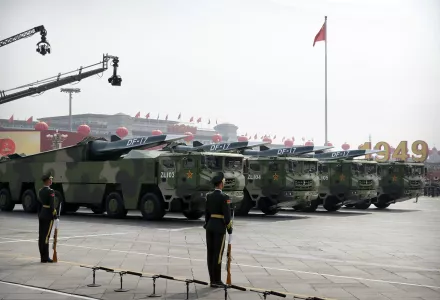International Security is America's leading peer-reviewed journal of security affairs.

Summary
The risk of a major China-U.S. conventional war inadvertently escalating to a nuclear level is extremely low. Detailed analysis of three potential mechanisms of China-U.S. inadvertent escalation—use-it-or-lose-it, unauthorized/accidental, and damage limitation—situated within both the survivability of China’s nuclear forces and China’s nuclear command, control, and communication (NC3) system supports this conclusion. To keep the risk of inadvertent escalation low, both sides must take appropriate precautions and exercise self-restraint in their planning and operations.
The full text of this publication is available in the link below.





